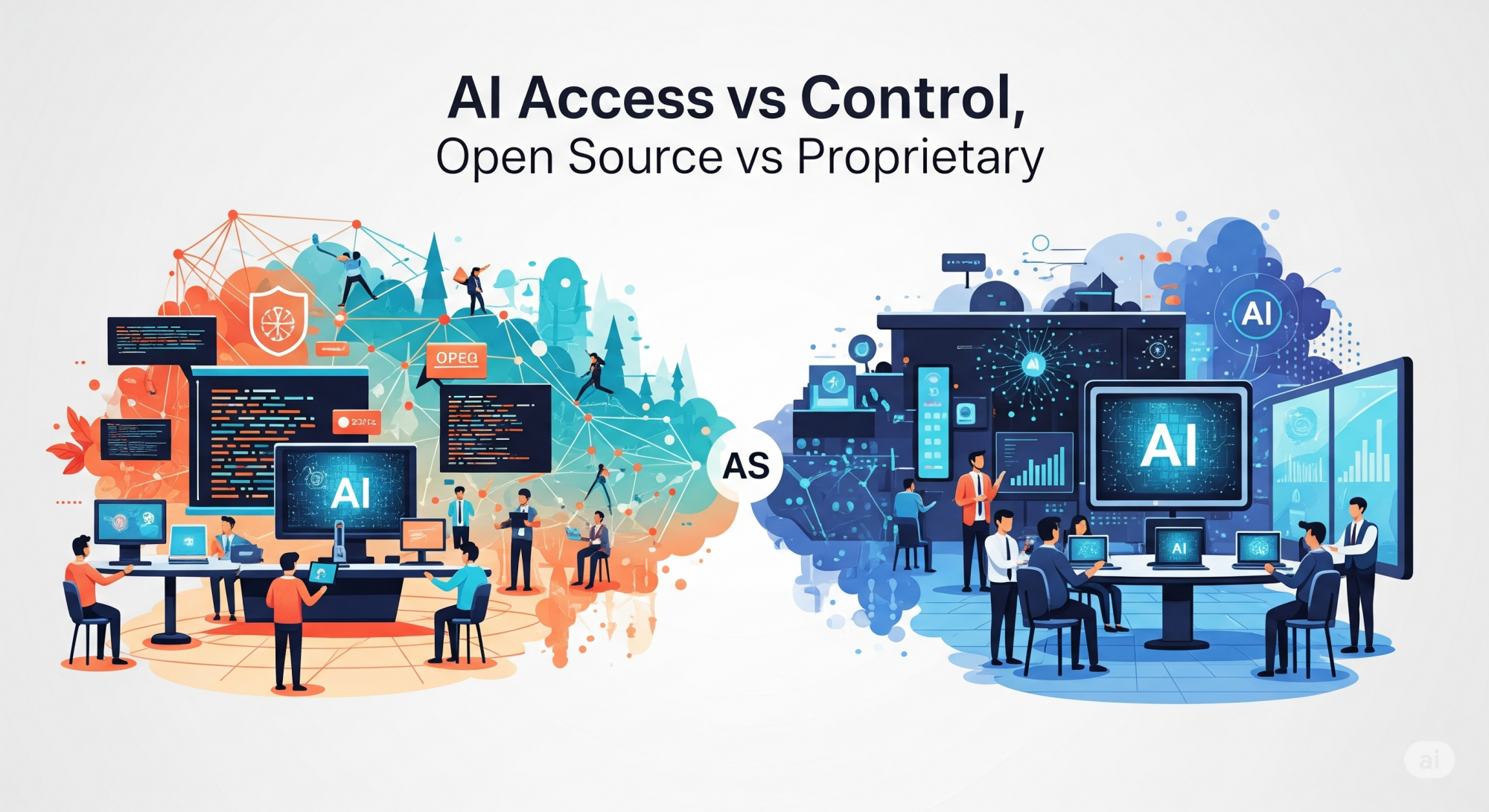In recent years, open-source artificial intelligence (AI) has ignited lively discussion among tech experts, lawmakers, and curious minds. Open-source AI’s charm lies in its openness and creativity, shining against shadows of possible misuse. The pressing question: can we balance transparency and security? This inquiry is both timely and crucial.This post aims to unpack key discussions in this heated debate, comprehending what open-source AI truly entails and its benefits, examining risks these technologies might bring, digging into arguments for solid access and strict control, and pondering how we can create harmony inspiring innovation while protecting against misuse.
Definition of Open-Source AI
Open-source AI refers to projects where everyone has access to underlying code. This model opens doors for anyone to contribute to growth, making rapid advancements possible. Frameworks like TensorFlow and PyTorch embody this idea. With open-source AI, opportunities for collaborative innovation are limitless.As TechResearch analyst mentioned,
“Open-source platforms democratize technology, allowing smaller enterprises to innovate without exorbitant cost of proprietary software.”
By fostering comm
unity contributions, open-source projects gain varied viewpoints, ensuring richer evolution.
Case for Open-Source Models
Supporters maintain open-source AI encourages transparency and fuels innovation. By permitting anyone to scrutinize and refine AI algorithms, we cultivate creativity culture. Companies save resources by leveraging already-developed tools instead of starting from scratch.World Economic Forum observed open-source AI can spur economic development by lowering entry barriers for technology startups. Providing equal opportunities allows competitive environment where groundbreaking ideas spring from unexpected sources.
Dark Side of Accessibility
Nevertheless, open-source AI comes with risks. Critics highlight situations where these powerful models may be abused. Weaponized language models could make easier disinformation campaigns or cyber-attacks, bringing ethical issues to forefront. Misuse could lead to serious consequences.According to Cybersecurity Journal report,
“Open-source code’s very nature makes it susceptible to manipulation, potentially allowing malicious actors to use AI for harmful activities.”
Such cases call for serious discussion about safety and regulation.
Striking Balance: Access versus Control
As debate becomes heated, the essential question remains: should powerful AI models be freely accessible, or kept tightly controlled? Control advocates argue strong restrictions are necessary to reduce associated risks. Limiting access to advanced AI models might deter potential abusers.Open access supporters argue locking AI away stifles creativity. Creating restrictive barriers ultimately slows progress. As technologist Maya Patel noted,
“Innovation thrives in environments of openness and trust.”
Innovating Responsibly
In steering through these complexities, Companies must emphasize responsible development. Establishing ethical frameworks surrounding open-source AI is crucial for nurturing advantages while minimizing risks. Companies must adopt guidelines and demonstrate responsible behavior using open-source tools.Companies like OpenAI advocate for ethical AI usage and have started discussions on developing ethical guidelines, promoting community-led projects encouraging safe AI practices worldwide.
Conclusion
Open-source AI holds promise of both innovation and danger. Principal challenge lies in fostering balance that encourages creativity while mitigating risks. Advocating for both access and control could lead to healthier advancements and broader participation within AI landscape.As technologists and stakeholders, we must accept responsibility accompanying harnessing these powerful tools. Ultimately, open-source AI’s future hinges on how we navigate complex terrain of innovation while prioritizing ethical considerations. Together, we can reshape AI landscape for the better.
Further Reading
